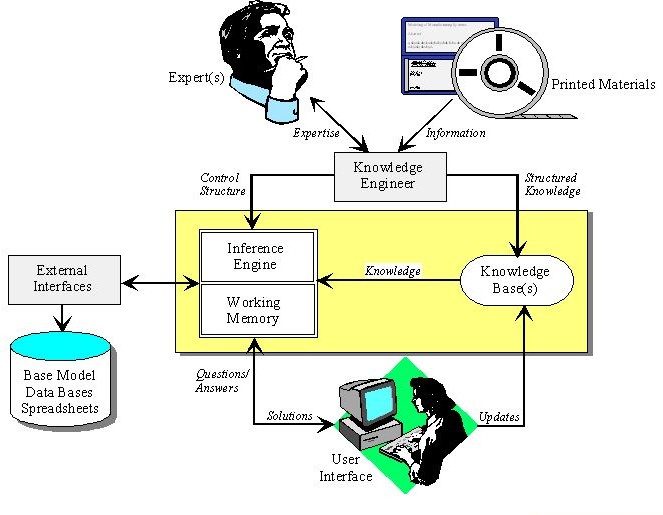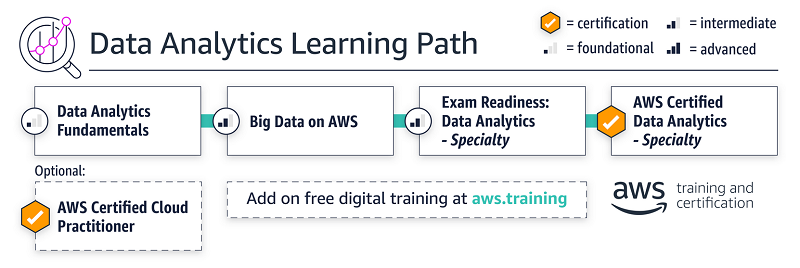
Explainable AI (XAI) allows us to see and explain the decisions that AI systems make. Explainable AI allows us to understand the processes that make our AI systems work. This is in contrast to black-box machinelearning, which relies on algorithms that are not subject to human supervision or interaction. This is important especially for developing new AI-related applications. It isn't just about explaining the functions of AI. It promotes a better understanding and appreciation of human behavior as well as the interactions between machines and humans.
XAI refers to a type of explicable artificial intelligence.
XAI (extension of artificial intelligence) provides explanations to complex data. This type is typically characterized by a lack of ground-truth explanations and classification labels. Therefore, it can be difficult for experts to compare XAI's results with theirs. Ground-truth explanations are essential for energy industry applications. But, defining and collecting ground-truth explanations is not an easy task.
Depending on the level and abstraction of the XAI method, there are many outputs. The output usually contains information on the model generation process. It may include the decision pathway in a decision tree modeling or a rule that was generated using a simplified model. XAI outputs can also be visuals of data or the resulting ML model. It doesn't matter what type of explanation you use, it is important to understand how the ML models work before you implement them.

It helps to ensure accountability for AI systems
Transparency can provide the "right" to explain and give justification for AI decisions. Sound explanations can be different for different stakeholders. One explanation may seem clear to an expert, but it might not be to a layperson. Transparency is essential in this instance to explain each decision and ensure it meets acceptable standards. Transparency should be achieved by outcome-based explanations. These explanations are intended to hold the public, regulators and businesses accountable for AI decisions.
People should verify the competence of AI developers beyond providing an honest explanation. Valid evidence of competence can be provided by certifications, years' experience, and accuracy demonstrations. Apart from evaluating the level and competence of AI developers they should also carry out conformity assessment. This is because human judgment cannot accurately evaluate the performance and capabilities of AI systems. The NIST Text Retrieval (2011) Legal Track (TREC study) revealed a vast gap between actual recall estimates and actual recall.
It reduces ethical problems
Many have raised concerns and questions regarding the advent of AI. As we develop this new technology, legal and ethical issues will undoubtedly arise. It is vital to create an AI policy. The company's AI policy must address legal and ethical concerns when something goes wrong. Some companies have included their AI policy in the code of conduct. Ethical AI policy is only as effective as the employees who implement it.
The issue of explanationability was addressed in a recent set of guidelines for ethical AI. The lack of transparency into the algorithms behind AI systems isn't fundamentally different from human thought. AI tools are often handled in a very intensive manner, similar to a black box. Humans can be asked to justify their decisions and defend them. The medical community and society will benefit from the explanation of AI models, in addition to being able to avoid opacity.

It helps to improve the understanding between humans & machines
AI systems must be able to explain their decisions and provide evidence to support them. This is critical to build trust between humans, machines and AI. Medical professionals can explain their reasoning to AI systems and reduce ethical concerns. For example, they can explain to patients why they have been diagnosed with cancer or pneumonia. This would otherwise be impossible through words. This type of artificial intelligence could also prove useful in situations involving accountability.
As AI applications grow in scope, so does the need to have better explanations. Developers and researchers are now able to explain AI models using clear AI techniques. This will help them understand the models better and reduce ethical concerns. This technology is useful in manufacturing and military training. It can also be used to communicate with employees at assembly lines and improve machine–to-machine communication. However, it does have a number of challenges, including privacy issues and securing sensitive data.
FAQ
Is AI possible with any other technology?
Yes, but not yet. There have been many technologies developed to solve specific problems. However, none of them can match the speed or accuracy of AI.
Are there any risks associated with AI?
Of course. There will always exist. AI is a significant threat to society, according to some experts. Others believe that AI is beneficial and necessary for improving the quality of life.
The biggest concern about AI is the potential for misuse. If AI becomes too powerful, it could lead to dangerous outcomes. This includes things like autonomous weapons and robot overlords.
AI could take over jobs. Many people worry that robots may replace workers. But others think that artificial intelligence could free up workers to focus on other aspects of their job.
For example, some economists predict that automation may increase productivity while decreasing unemployment.
Which countries are leaders in the AI market today, and why?
China has more than $2B in annual revenue for Artificial Intelligence in 2018, and is leading the market. China's AI industry is led in part by Baidu, Tencent Holdings Ltd. and Tencent Holdings Ltd. as well as Huawei Technologies Co. Ltd. and Xiaomi Technology Inc.
China's government invests heavily in AI development. China has established several research centers to improve AI capabilities. These centers include the National Laboratory of Pattern Recognition and the State Key Lab of Virtual Reality Technology and Systems.
China is home to many of the biggest companies around the globe, such as Baidu, Tencent, Tencent, Baidu, and Xiaomi. All these companies are actively working on developing their own AI solutions.
India is another country that has made significant progress in developing AI and related technology. India's government is currently working to develop an AI ecosystem.
How does AI work?
Understanding the basics of computing is essential to understand how AI works.
Computers keep information in memory. Computers work with code programs to process the information. The code tells the computer what it should do next.
An algorithm is an instruction set that tells the computer what to do in order to complete a task. These algorithms are often written in code.
An algorithm is a recipe. A recipe might contain ingredients and steps. Each step is a different instruction. A step might be "add water to a pot" or "heat the pan until boiling."
Statistics
- The company's AI team trained an image recognition model to 85 percent accuracy using billions of public Instagram photos tagged with hashtags. (builtin.com)
- In the first half of 2017, the company discovered and banned 300,000 terrorist-linked accounts, 95 percent of which were found by non-human, artificially intelligent machines. (builtin.com)
- While all of it is still what seems like a far way off, the future of this technology presents a Catch-22, able to solve the world's problems and likely to power all the A.I. systems on earth, but also incredibly dangerous in the wrong hands. (forbes.com)
- A 2021 Pew Research survey revealed that 37 percent of respondents who are more concerned than excited about AI had concerns including job loss, privacy, and AI's potential to “surpass human skills.” (builtin.com)
- That's as many of us that have been in that AI space would say, it's about 70 or 80 percent of the work. (finra.org)
External Links
How To
How to setup Alexa to talk when charging
Alexa, Amazon’s virtual assistant is capable of answering questions, providing information, playing music, controlling smart-home devices and many other functions. It can even hear you as you sleep, all without you having to pick up your smartphone!
Alexa can answer any question you may have. Just say "Alexa", followed up by a question. You'll get clear and understandable responses from Alexa in real time. Alexa will also learn and improve over time, which means you'll be able to ask new questions and receive different answers every single time.
You can also control other connected devices like lights, thermostats, locks, cameras, and more.
Alexa can also be used to control the temperature, turn off lights, adjust the temperature and order pizza.
Alexa to speak while charging
-
Step 1. Step 1. Turn on Alexa device.
-
Open Alexa App. Tap Settings.
-
Tap Advanced settings.
-
Choose Speech Recognition
-
Select Yes, always listen.
-
Select Yes, you will only hear the word "wake"
-
Select Yes, then use a mic.
-
Select No, do not use a mic.
-
Step 2. Set Up Your Voice Profile.
-
You can choose a name to represent your voice and then add a description.
-
Step 3. Test Your Setup.
Use the command "Alexa" to get started.
Ex: Alexa, good morning!
Alexa will respond if she understands your question. For example, "Good morning John Smith."
Alexa won't respond if she doesn't understand what you're asking.
If necessary, restart your device after making these changes.
Notice: If you have changed the speech recognition language you will need to restart it again.